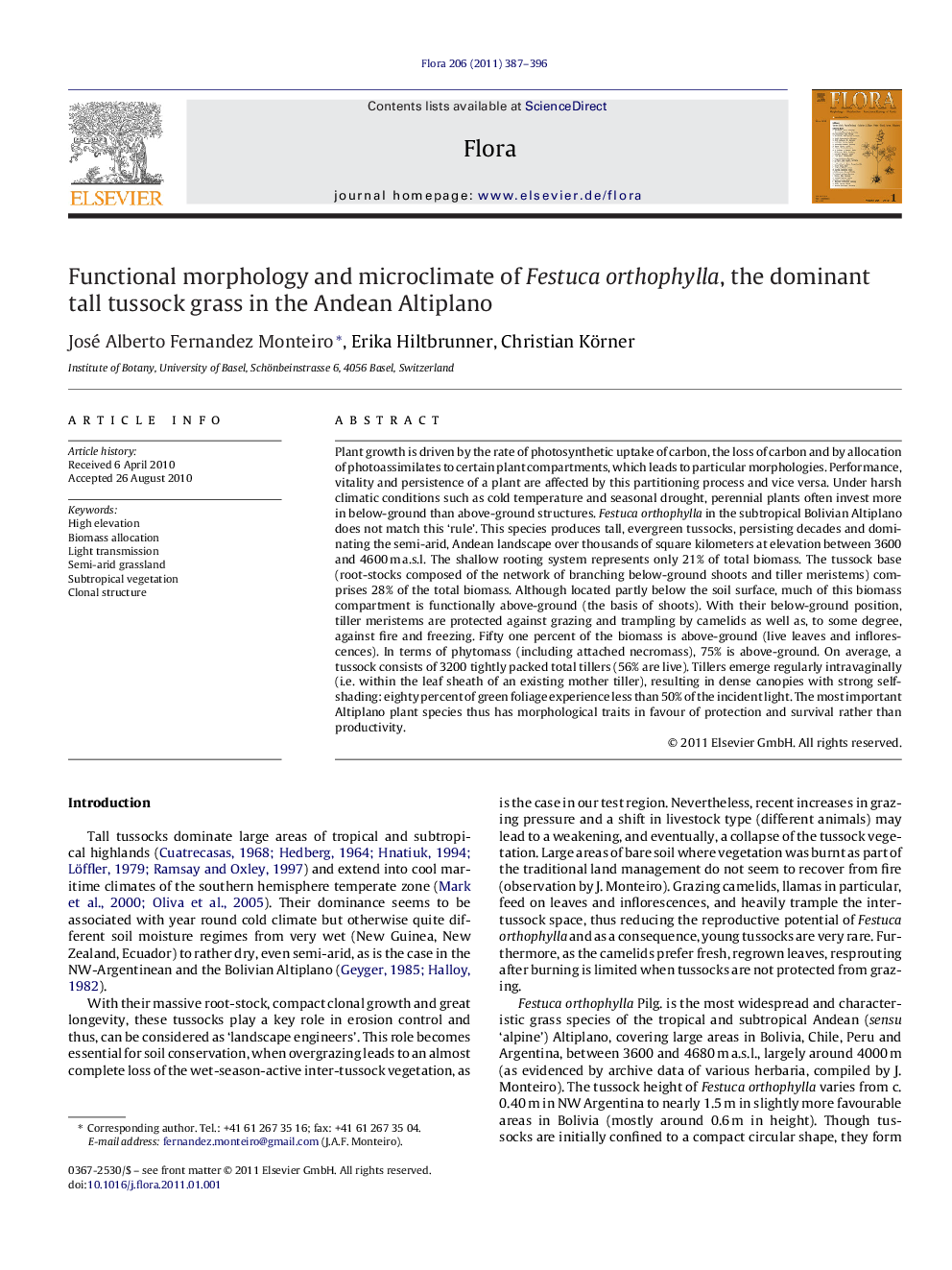| کد مقاله | کد نشریه | سال انتشار | مقاله انگلیسی | نسخه تمام متن |
|---|---|---|---|---|
| 2180077 | 1095106 | 2011 | 10 صفحه PDF | دانلود رایگان |

Plant growth is driven by the rate of photosynthetic uptake of carbon, the loss of carbon and by allocation of photoassimilates to certain plant compartments, which leads to particular morphologies. Performance, vitality and persistence of a plant are affected by this partitioning process and vice versa. Under harsh climatic conditions such as cold temperature and seasonal drought, perennial plants often invest more in below-ground than above-ground structures. Festuca orthophylla in the subtropical Bolivian Altiplano does not match this ‘rule’. This species produces tall, evergreen tussocks, persisting decades and dominating the semi-arid, Andean landscape over thousands of square kilometers at elevation between 3600 and 4600 m a.s.l. The shallow rooting system represents only 21% of total biomass. The tussock base (root-stocks composed of the network of branching below-ground shoots and tiller meristems) comprises 28% of the total biomass. Although located partly below the soil surface, much of this biomass compartment is functionally above-ground (the basis of shoots). With their below-ground position, tiller meristems are protected against grazing and trampling by camelids as well as, to some degree, against fire and freezing. Fifty one percent of the biomass is above-ground (live leaves and inflorescences). In terms of phytomass (including attached necromass), 75% is above-ground. On average, a tussock consists of 3200 tightly packed total tillers (56% are live). Tillers emerge regularly intravaginally (i.e. within the leaf sheath of an existing mother tiller), resulting in dense canopies with strong self-shading: eighty percent of green foliage experience less than 50% of the incident light. The most important Altiplano plant species thus has morphological traits in favour of protection and survival rather than productivity.
Journal: Flora - Morphology, Distribution, Functional Ecology of Plants - Volume 206, Issue 4, April 2011, Pages 387–396